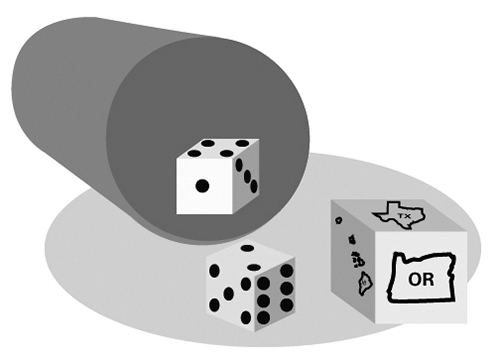Recently, the Centers for Medicare & Medicaid released a comparative look at the medical costs of different hospitals in every state, causing anger and sheer confusion as prices for similar procedures varied by thousands of dollars, even within regions.
Greener on the other side

Recently, the Centers for Medicare & Medicaid released a comparative look at the medical costs of different hospitals in every state, causing anger and sheer confusion as prices for similar procedures varied by thousands of dollars, even within regions.
Many of these procedure cost comparisons are staggering. For instance, the report’s data shows that treatment for chronic obstructive pulmonary disease at a hospital in New Jersey costs $99,690. In the Bronx, which is less than 30 miles away, the same treatment costs only $7,044. A $92,646 difference is not only bewildering but, for those who’ve been paying almost $100,000, infuriating.
We’ve got a broken health care system, and anyone who didn’t think so before this report came out must surely think so now.
Where are the standards, the principles, the coherency? Aren’t there any regulations in the industry that maintain some sort of consistency? Apparently not.
Unfortunately, explanations for these cost disparities appear to be guesses at best. Some believe that the size of the hospital and differing levels of overhead affect prices across the board within that hospital. If a hospital has a highly specialized department, its equipment costs and other expenses may raise the rates of procedures unrelated to that department.
Even CMS Director Jonathan Blum couldn’t find a viable explanation. “What drives some hospitals to have significantly higher charges than their geographic peers? I don’t think anyone here has come up with a good economic argument,” he told The Huffington Post.
At least the release of this information provides the public with a tool they can use when seeking treatment. Because all of the comparisons are available to the public, anyone can find out what a particular procedure will cost at any hospital and be able to make an educated financial decision. This is especially important for those without health insurance—49 million Americans, according to The Huffington Post.
Why so many? Part of it is that these individuals have been paying more than necessary when they could be getting the same procedure at a hospital down the street for thousands less.
In this recession, a difference of a few thousand dollars is critical. For people living paycheck to paycheck, a hospital visit is the last thing they want or need. A freak accident, a burst appendix, a pregnancy or even a virus can put a financial stranglehold on an individual or a family that will persist long after the ailment is gone or the baby is born.
While we may have an astonishingly absurd, inefficient and expensive health care system, the CMS report provides at least a small measure of guidance when we need to seek medical treatment.
I hope this causes enough indignation and public outrage that the pressure on hospitals and the entire health care system will be overwhelming. However, hospitals may be forced to change regardless of public opinion; now that their prices are public, they will face what every other business in the country deals with: competition.
Hospitals will start treating their prices the way gas stations do. One hospital may see that a competitor has raised or lowered its prices and follow suit. While competition may drive down a procedure’s cost, what it won’t do is ensure consistency.
Some sort of standardization is imperative, even if it takes the federal government stepping and establishing limits. The disparity is inexcusable and embarrassing for the U.S. What does the rest of the world think when they see this? There are other Western nations that have shown that efficient, affordable, universal health care can be achieved.
Why we’re dragging our feet, I don’t know, but I can’t help but think that this unbelievable variation in prices makes a few people a lot of money. The problem is, our system is dragging the already downtrodden working and middle classes further into an economic mire.






